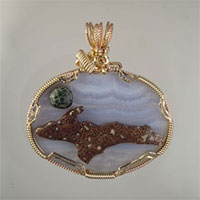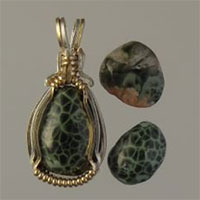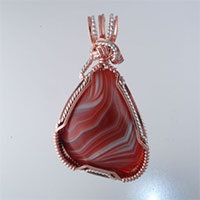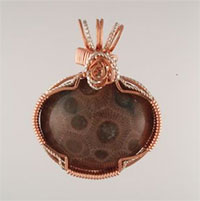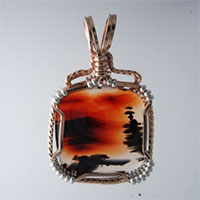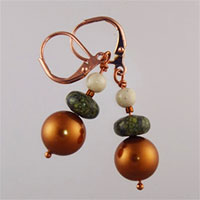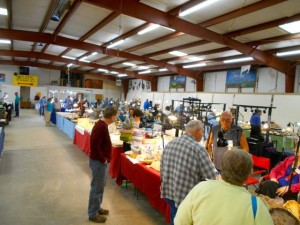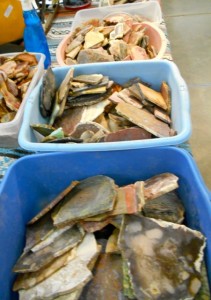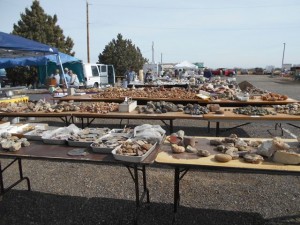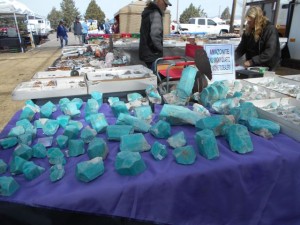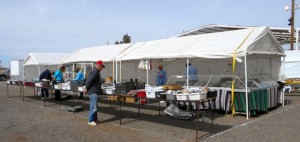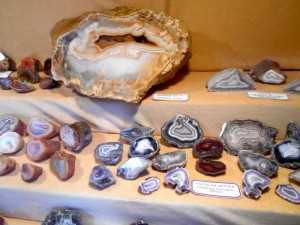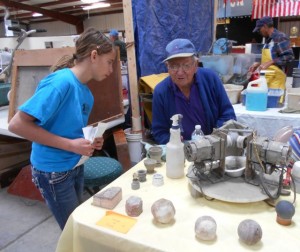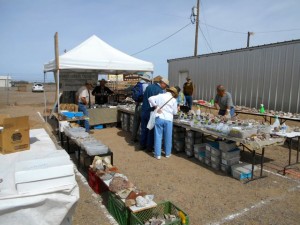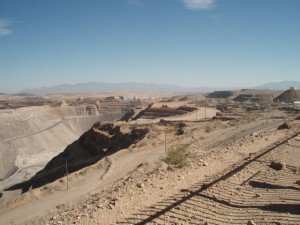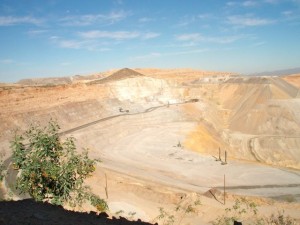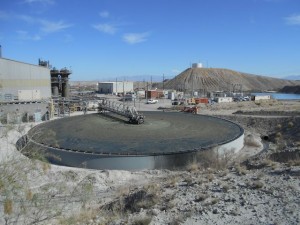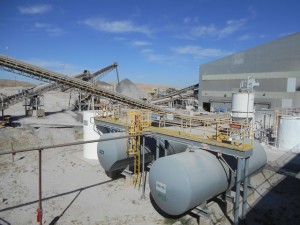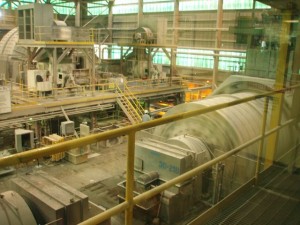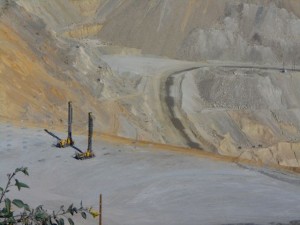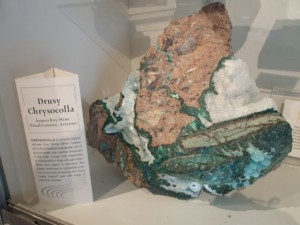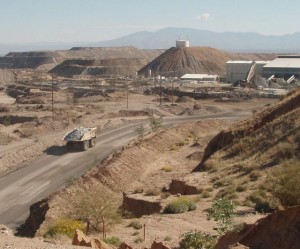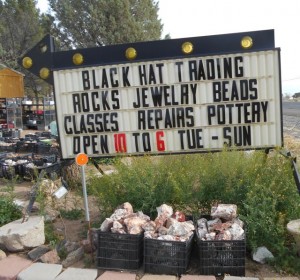
This sign leads to some awesome rock picking.
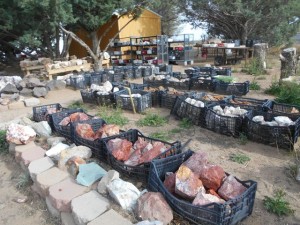
Some of the best rock pickin around.
My last blog mentioned Black Hat Trading in Deming, New Mexico. It is owned and operated by the Searcy Family, Jan, James and Jess. When we were in Quartzsite Bonnie talked with him and was intrigued because he said that he takes people out on field trips in the area, so she carefully kept the business card in case we came through the area again.
So, indeed we find ourselves in Deming, and we lucked out to come just when the Deming Rockhound Roundup was held. While we talked at the Black Hat Trading booth, he invited us to go over to his store and told me where to look for some agate I was after. I was lured by the promise of old Luna Agate. The Luna Agate turned out to be blue agate, not quite what I was after, but that didn’t matter, because I found lots of other stuff, including Fun!
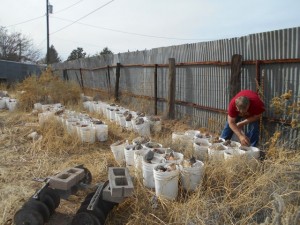
Old buckets buried in the sand burrs. I hear that Angelic Note that is played when the heavens open up.
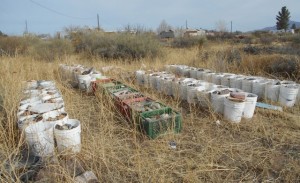
HALLELUJAH!!!!!
North of Deming, on Silver City Highway, you might overlook this if you didn’t know to look for it. As soon as you pull in the driveway the curiosity begins. The front of the shop is surrounded by crates that hold assorted local agates and rocks from the Big Diggins, Fluorite Hill, Baker Ranch, and other agate-rich hunting grounds. Of course there are lots of petrified wood, and assorted rhyolites including the local banded rhyolite bedrock. I was encouraged to “Go out back and check the buckets.” Certain buckets were off-limits, but when I went and took a look, the Hallelujah Chorus played in my head. I would rather hunt a bunch of old dirty buckets than take a chance at unfamiliar hunting grounds. (Besides, I have a bad leg…) Now let me tell you, I know these buckets had been sitting there for 2-3 years, because when I tried to move one, the bucket would disintegrate from UV deterioration. The buckets were filled with leaves and had sunk into the ground 2-3 inches. Hundreds of 5 gallon buckets, everywhere you looked, made this a roll of the dice as to which one to dig through. Rocks purchased from old collections were brought back and left in rows in the sand burr-infested grounds, waiting for future work. I kept an eye open for snakes, rodents, and unwelcome spiders before I stuck my hand in the buckets. Many of these were so dirty I couldn’t tell what they were until I sprayed them with water.
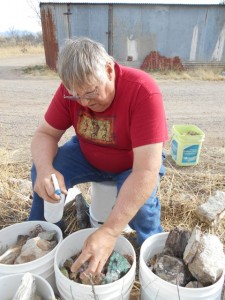
One bucket to set on is a good idea.
My cursory search produced some great cutting and jewelry making material, both from local sources and around the world. Since this was old material I expected to find some quality local rocks that were picked up many years ago before I was not disappointed when I found some nice banded agate from the Big Diggings, some bryzoa material, colorful petrified wood and chrysocolla. I was overwhelmed by the amount of stuff, and the good quality. I had one bucket to sit on, one to sort into as I moved down through the buckets in front of me and another for the rocks I wanted to purchase. I had lots of fun, but I limited myself to one bucket to go home with me. When you have already been to Quartzsite, Tucson, Deming’s Rockhound Roundup, the RV is pretty loaded.
I was not in the market, but if you wanted to buy a big rock for your rock garden, wow, this would be a fun place to shop. Bonnie asked what time of year to come back to see their flowers in bloom, as this was clearly not the peak season for this, but May-June would be great. Meantime while I was digging through dirty buckets Bonnie was studying and shopping inside where they had an extensive bead room, and lots of kumihimo supplies and other bead findings. And they do classes on several beading topics, so it sounds like an inviting place to spend a while!
If you are in that area, go to Black Hat Trading. This is the kind of rock shop that a TV network might visit if they were doing a reality show on “Rockin’ Rock Shops”, with a family of rockhounds, an old timer, a shop full of equipment, outside piles to explore and a store full of treasures. Can it get any better?


